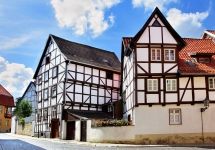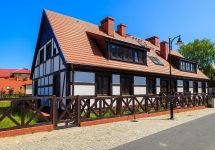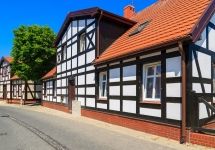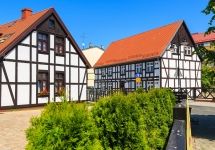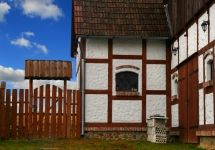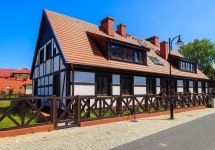Wattle and daub houses, i.e. what do Sudetes and Gdańsk Pomerania have in common?
Although there are no two identical houses, they combine different regions of Poland. Wattle and daub houses - which are mentioned here - can be found both in Sudetes and Gdańsk Pomerania.
Typical houses are low, usually plastered in white and crossed with dark beams arranged in geometric patterns (usually truss). Hence, their name is supposed to be derived from - sources say that “wattle and daub” can be translated as a “log”, i.e. a wooden element in walls. A wooden structure, according to historical sources, was predominantly filled with clay mixed with chaff, chips, sawdust, and even fur (e.g. cow). As a result, the wall texture looks different any time of day (the angle of sunlight play a significant role).
As a rule, wattle and daub houses were covered with red tiles (gable roof), which looked like a box of chocolates. To differentiate them sometimes, they performed facades in different colours, which, on the one hand, provided them with picturesqueness, and, on the other, - the owners found it easier to recognize their properties.
Wattle and daub is often confused with timber framing. Mainly due to the fact, that after plastering it’s hard to differentiate them. The wooden frame of wattle and daub houses was filled with clay, whereas the other one was composed of bricks.
Where can we find them?
Wattle and daub constructions used to be (and sometimes still are) popular in Alpine construction (and throughout West Europe), where they are called “checked” houses. In Poland we can find them in both Sudetes and Gdańsk and West Pomerania. Also in Podhale. Interestingly, in the past centuries they were often found in central and southern regions of Poland (e.g. in Cracow and Kielce area), where they replaced log and straw-roofed houses . An advantage of such a construction was an unsophisticated construction and time - one year was enough to erect a bigger body.
Not only was wattle and daub used to build houses, but also barns and granaries (e.g. in town and cities like: Bydgoszcz, Żabinko, Kluki and Dubin), bell towers and town halls (e.g.: Santok and Nowe Warpno) and churches (e.g.: Wrocław, Świdnica, Oborniki). Regardless of their function, or the area they were located, they always preserved their structure - in architecture conservatism and loyalty toward tradition are rather rare. All of them, except a few, are still in a good condition.





